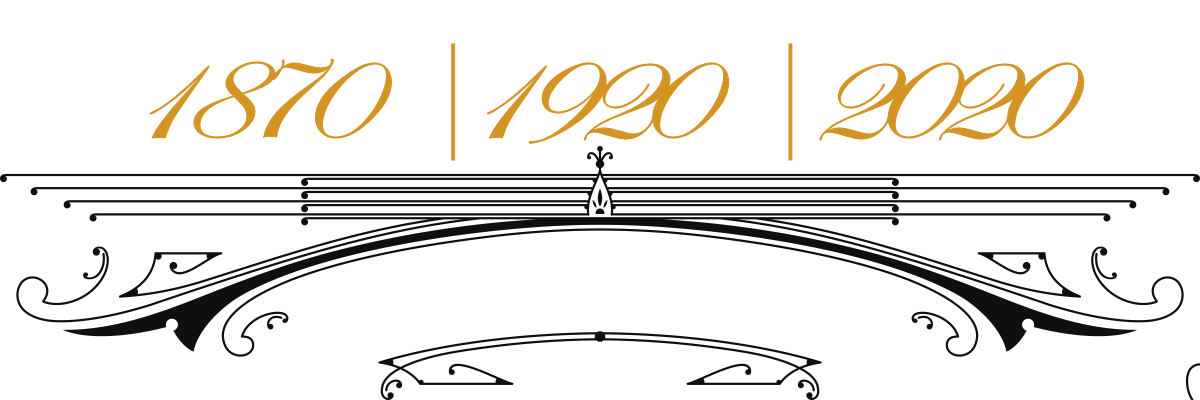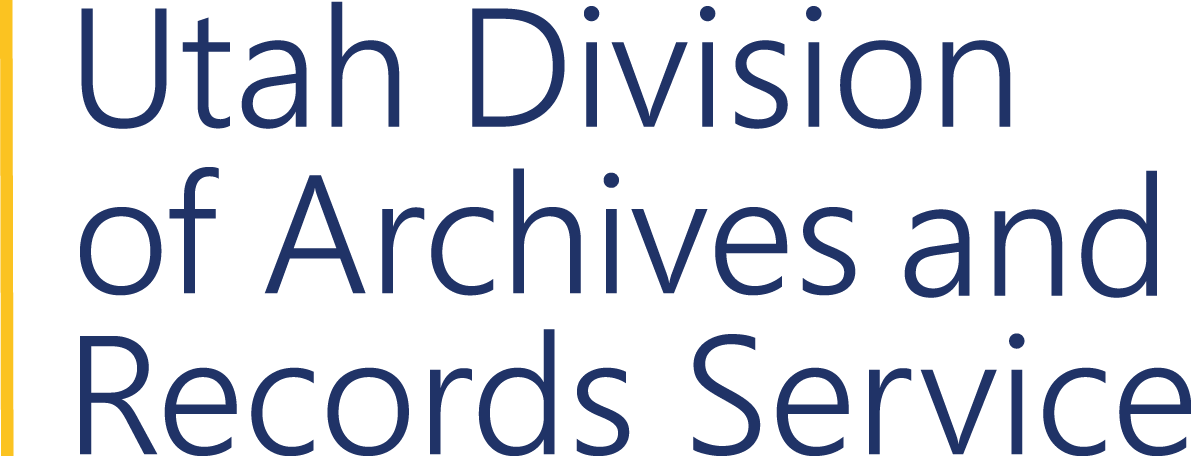Suffrage and Stories of Utah Women

The year 2020 is an especially important anniversary for women’s suffrage in Utah. It marks the 100th anniversary of nationwide suffrage and 150 years of Utah suffrage. In 1870, the territorial legislature granted women the right to vote, only the second state or territory to do so (after Wyoming in 1869). The bill had its final passage on February 12, 1870. There happened to be a municipal election in Salt Lake City just two days later, so the very first woman to vote in the modern United States was Seraph Young on February 14, 1870.
This time and place was not a coincidence. There had been some thought that granting female suffrage would lead to the end of the practice of Mormon polygamy in Utah. It didn’t exactly turn out that way, so Congress began passing laws to end polygamy forthwith. In 1887, the Edmunds-Tucker Act removed women’s suffrage entirely, whether they participated in polygamy or not.
Many women protested this action, and organized to advocate for a return of suffrage when statehood became a reality in 1895. At the Constitutional Convention, petitions from groups of women all over the territory were submitted and recorded, and then discussed by the (male) delegates to the convention. The final Utah State Constitution includes in Article 4: “The rights of citizens of the State of Utah to vote and hold office shall not be denied or abridged on account of sex.”
Now women in Utah could both run for office and vote, unlike most of the rest of the United States.  Many in Utah joined or continued supporting national suffrage movements that eventually led to an amendment to the U.S. Constitution. In 1917, a joint memorial of the Utah House of Representatives by Elizabeth Hayward urged Congress to pass such a federal suffrage amendment. Again in 1919, now-Senator Hayward sponsored a joint memorial indicating that Utah was ready and willing to ratify such an amendment. Later that year, when the 19th amendment had been drafted and presented to the states, the Utah Legislature ratified it in a special session in September: “The right of citizens of the United States to vote shall not be denied or abridged by the United States or by any State on account of sex.”
Many in Utah joined or continued supporting national suffrage movements that eventually led to an amendment to the U.S. Constitution. In 1917, a joint memorial of the Utah House of Representatives by Elizabeth Hayward urged Congress to pass such a federal suffrage amendment. Again in 1919, now-Senator Hayward sponsored a joint memorial indicating that Utah was ready and willing to ratify such an amendment. Later that year, when the 19th amendment had been drafted and presented to the states, the Utah Legislature ratified it in a special session in September: “The right of citizens of the United States to vote shall not be denied or abridged by the United States or by any State on account of sex.”
This is not the end of the story though for all women. Along with the records that document this legislative history, the Utah State Archives will also be sharing stories of underrepresented women and others still denied equal rights in professions, public service, and social life.
Explore Timeline1870
"Journal record books, Page 150-151"
February 12, 1870
Legislative Assembly. House Journal record books (Series 16660)
1870
"Act conferring upon women the elective franchise" in 1870 Acts and Bills
February 12, 1870
Legislative Assembly
Territorial legislative records (Series 3150)
1870
"An Act Conferring upon Women the Elective Franchise" from Page 8 of the 1870 19th session
Approved February 12, 1870
Legislature
Laws of Utah (Series 83155)
1895
“Memorial 1” from the women of Ogden City and Weber County
March 13, 1895
Constitutional Convention (1895) Records (Series 3212)
1895
“Constitution of the State of Utah, Article 4: Elections and Rights of Suffrage”
May 8, 1895
Constitutional Convention (1895) State Constitution (Series 3214)
1916
“1916; Womens' Suffrage”
July 31, 1916
Telegram from Governor Spry to Republican Presidential candidate Charles Hughes to "emphasize the plank on women's suffrage" in acceptance speech.
Governor Spry Correspondence (Series 226)
1917
“1917 Session: House Joint Memorial No. 6, signed”
March 2, 1917
Secretary of State Legislative bills (Series 4076)
1917
“Bill back for 1917 Session: Joint Memorial No. 6”
February 17, 1917
House of Representatives Working bills (Series 432)
1919
“1919 Session: Senate Joint Memorial No. 1, passed unanimously”
January 16, 1919
Secretary of State Legislative bills (Series 4076)
1919
“True copy of resolution of Congress Joint Resolution Proposing an amendment to the Constitution extending the right of suffrage to women”
June 12, 1919
Secretary of State Legislative bills (Series 4076)
1919
“Full, true and correct copy of Joint Resolution of Congress by Utah Secretary of State with seal”
September 29, 1919
Senate Working bills (Series 428)
1919
“1919 Special: Joint Resolution No. 1 text”
September 30, 1919
Senate Working bills (Series 428)
1919
“Letter from Governor transmitting Senate Joint Resolution No. 1 to United States Secretary of State”
October 3, 2019
Secretary of State Legislative bills (Series 4076)
Martha Hughes Cannon
Martha Maria Hughes was born in 1857 in Wales. She immigrated to Utah just a few years later with her family as new converts to the Church of Jesus Christ of Latter-day Saints. She became one of the very few female physicians, beginning her practice in Utah around 1882. That is how she met her husband Angus Cannon, a prominent Mormon polygamist. They married in 1886, after polygamy was made illegal and just before women's suffrage was ended in Utah in retaliation. Dr. Cannon advocated for the return of suffrage in the 1895 state constitution, though she was not allowed to vote for ratification. She ran for the state Senate in the 1896 election and won against her own husband on the opposing party ticket. As she said to the U.S. House of Representatives in 1898, "Women have quietly assumed the added power which always was theirs by right."
See also our blog post and profile on utahwomenshistory.org. The Utah Department of Health and Human Services today has offices in the Cannon Health Building.
This document contains the reported election expenses for and is signed by Martha Hughes Cannon. The statement was filed on December 2, 1896 with the new Secretary of State and notarized by John M. Cannon. The expenses listed total $35 (about $1,200 adjusted for inflation).
Dr. Cannon submitted a bill on Public Health in the 1897 general legislative session. She was also the chair of the Committee on Public Health which recommended favorably "An Act to Protect the Health of Shop-Girls and Women Clerks" in February. It passed the Senate to be incorporated into the Laws of Utah as Chapter 11: Health of Female Employees.
In her second and ultimately final legislative session in 1899, Dr. Cannon sponsored an extensive bill to suppress "[w]hatever is dangerous to human life or health" and ensure pure food, air, and soil. It covered the duties of the newly created Board of Health, contagious diseases, quarantine, and burial of human bodies. The bill was passed in March and was incorporated into the Laws of Utah as Chapter 45: Health and Quarantine Regulations.
Credits
Exhibits Text: Gina Strack
Project team: Gina Strack, Maren Peterson, Lauren Singer Katz
Originally published in 2020. Martha Hughes Cannon added in February 2023 as part of "Martha Goes to Washington."
Sources: Open each document below to see full descriptions of each item. To cite, use the information in the rights statement or at minimum include the agency, series title and number, item title, and a link (available from “Reference URL”).
Also Better Days Curriculum. “Gaining, Losing, and Winning Back the Vote: The Story of Utah Women’s Suffrage,” February 9, 2018. https://www.utahwomenshistory.org/2018/02/receiving-losing-and-winning-back-the-vote-the-story-of-utah-womens-suffrage/.
Feature image: Sara Bard Field speaking at Salt Lake City, Oct. 4, Governor Spry of Utah and Mayor Park of Salt Lake City in attendance. Salt Lake City United States Utah, 1915. Oct. 4. Photograph. https://www.loc.gov/item/mnwp000283/.
Background image: Harris & Ewing, Washington, D.C. Some of the picket line of Nov. 10, 1917. Left to right: Mrs. Catherine Martinette, Eagle Grove, Iowa. Mrs. William Kent, Kentfield, California. Miss Mary Bartlett Dixon, Easton, Md. Mrs. C.T. Robertson, Salt Lake City, Utah. Miss Cora Week, New York City. Miss Amy Ju[e]ngling, Buffalo, N.Y. Miss Ha. United States Washington D.C, 1917. Photograph. https://www.loc.gov/item/mnwp000296/.
Page Last Updated February 16, 2023.

